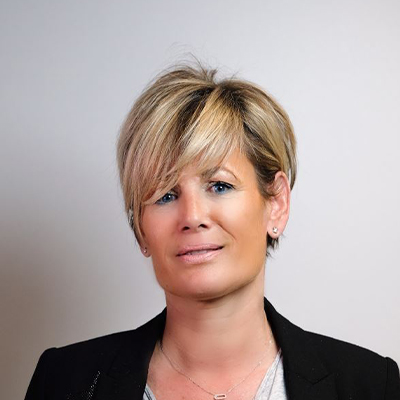All roads in the Cloud lead to FinOps - DEEP
All roads in the Cloud lead to FinOps
18 February 2022

In the 4 to 6 months following the first Cloud projects, the company already has enough experience and hindsight to assess its consumption and correlate it with its uses and objectives. It is at this stage that a strategic FinOps approach needs to be adopted. This will enable you to better budget your resource requirements and establish best practices for a long-term Cloud.
From estimating to correcting consumption
At the initial assessment stage, companies have already had a taste of FinOps. The assessment is based on the company's own charts to project the estimated Cloud resource requirements and the monthly cost to be expected. In practice, the initial estimate carries a margin of error of around 10 to 15% of the actual cost, either downwards or upwards, in a stable environment. This is a useful first indicator.
However, the Cloud doesn't just impact a company's projects, time-to-market and capacity for innovation. It can rapidly change the habits and organisation of teams. So, what was taken for granted and introduced into the preliminary assessment may well be abandoned a few months later, possibly leading to additional costs.
An example will certainly be more telling. It is quite possible to estimate the cost of a pre-production environment at a few dozen euros a month if the company only intends to leave it running for around twenty hours a month. The decision to opt for 24/24 at a moment's notice, for reasons of convenience or organisation, can multiply a bill by 10. But no prior study can cover such choices.
That's the whole point of a genuine FinOps approach, implemented after just a few months. The company integrates its new needs arising from practical experience, and has access to savings opportunities tailored to its new uses.
From audit to FinOps culture
Of course, FinOps can be seen as nothing more than a financial monitoring dashboard, which it partly is. But its operational value lies in the correlation of OPEX indicators with the consumption habits that are becoming established.
The use of the Cloud for both PaaS and IaaS is still in its infancy. There is very little operational maturity within the teams, hence the many erroneous postures and the additional costs they incur. The results of a FinOps study can be used to draw a number of lessons, deduce behaviours and gradually spread the financial culture of Cloud operations within departments.
The audit is the starting point. It brings teams together, raises awareness of the fact that financial control of the Cloud never depends on a single person or department, and offers an exhaustive view of Cloud resources consumed and tools used: compute, storage, data transfer, backup, log, monitoring, and on the PaaS, DBaaS and middleware side, each component's pricing model is examined and actual consumption evaluated.
The company can then compare its actual usage with the preliminary estimate, and understand how it consumes more or less depending on the arbitrages made in previous months.
From Cloud services to governance
It's only once you're in production that you can claim to be optimizing. In the meantime, however, the company is not left to its own devices. Automated alerts sound the alarm when estimates are exceeded beyond a pre-defined threshold. If this is the result of a company decision, there's nothing to worry about. If it's not, action needs to be taken.
Moving to the cloud is never done at isolation. But between necessary adjustments and project transformations, it's important to keep control. That said, it's also in the nature of the Cloud to evolve, especially when it's well adopted by teams, who find it to their advantage. In this case, you need to take advantage of the degressive models offered by Cloud providers and the threshold effects, which are more attractive financially. This is obviously an area for optimization that FinOps never neglects.
At the end, it's still a question of culture and financial governance, which strangely enough, companies don't always know how to apply outside their dedicated departments. Today, a CFO is just as involved in monitoring Cloud consumption as an IT department, whether it's a question of steering the Cloud several months in advance (with regard to seasonality, for example) or projecting total expenditure over the year. It is also the vehicle for a common language between finance and technical departments. Amortized costs, weighted costs, costs per BU, costs per department, etc.: are we talking about the same concepts? The definition of a governance structure, the implementation of shared tools and common rules will encourage dialogue within the company and facilitate exchanges with the service provider.
From optimization to multicloud
Optimization is based on a number of techniques, such as rightsizing and serverless, which we detailed in a previous article. The Cloud also enables a tagging policy that is particularly effective for financial monitoring and, above all, as granular as possible. Among good practices, machine tagging is one of the most essential, as a safeguard against financial drift.
There are times, however, when we need to move from design to optimization. This is the case whenever a company wants to move quickly into the Cloud, notably because it is leaving its datacenter and lacks the time to think about a real refactoring approach. In such cases, they opt for lift&shift as a first step (also known as rehosting). Only once the infrastructure has been moved to the Cloud is replatforming carried out, optimized through the FinOps study.
Refactoring, on the other hand, takes longer and is more complex to implement, but is also more interesting because it allows you to take full advantage of Cloud services. The aim of refactoring is to transform the architecture of your applications to adapt them fully to the Cloud.
The main aim of FinOps is to prevent companies from being forced to return to On Premise, as was the case, on a massive scale, in the early days of the Cloud. All the solutions exist to ensure that the Cloud remains a technological springboard for services, and not a threat of a financial abyss. Multicloud is the logical evolution of this, as companies have learned to consume the best from each Cloud Provider, without unnecessary ties. With systems management now completely delegated, companies are refocusing more than ever on their core business.
Contact us
Do you have any questions about an article? Do you need help solving your IT issues?
Contact an expert







Our experts answer your questions
Do you have any questions about an article? Do you need help solving your IT issues?
Other articles in the category Optimise your cloud: tips and strategies
DORA: guaranteeing an effective Exit Strategy
To help cloud-based financial services providers comply with DORA and support their operational resilience, Deloitte and DEEP are implementing an innovative ‘Exit Strategy’ solution.
Published on
20 December 2024
Best Practices for Oracle Cloud Migration with Landing Zone Implementation
The IT landscape is constantly evolving, requiring businesses to adapt to stay competitive. Cloud migration has become essential to achieve greater flexibility, scalability, and cost savings. However, a successful transition demands thorough preparation and the implementation of an optimized Landing Zone to fully leverage the benefits of Oracle Cloud.
Published on
11 June 2024
Cloud Audit: Effectively Determining Your Cloud Strategy
A cloud assessment, or cloud audit, is a crucial step in evaluating an organization's readiness to migrate to the cloud. This comprehensive audit examines resources, the environment, and the maturity of the information system, thereby determining the organization's capability to migrate to the cloud and under what conditions. It is essential for defining a tailored cloud strategy that considers the company's specific needs and environment. The audit begins with an analysis of the current state and a clear understanding of the objectives related to cloud migration.
Published on
23 February 2024
Got a project? Questions?
Send us a message and our experts will get back to you quickly.
DEEP? Your digital ally!
With DEEP, turn your IT projects into measurable and sustainable growth drivers.




